I was admitted with a herniated disc. Renat Madekhatovich was recommended to me by my friends. The operation went perfectly, now I have a recovery period ahead of me. Thank you very much for your work and the general conditions.
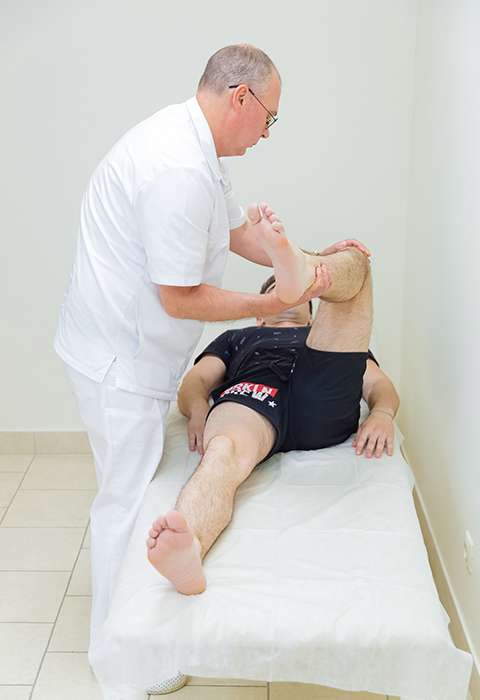
- When to see an orthopedist
- When is it necessary to see an orthopedic trauma surgeon?
- When to see an orthopedist
- Why you need rehabilitation after qualified medical intervention
- Operative trauma orthopedics
- Article
- Who is an Orthopedic Traumatologist?
- When should you make an appointment with an orthopedist/traumatologist?
- Arranging an appointment for a fee-based visit to the doctor
- When should I bring a specialist in orthopedics and trauma surgery to my home?
- What is the survey like at home?
- The home visit of the orthopedic trauma surgeon
- What diseases does the orthopedic traumatologist treat?
- When should you see an orthopedic trauma surgeon?
- areas of expertise
- Services
- patient ratings
- services and prices
- indications
- conducting a consultation
When to see an orthopedist
The first signs of pathology can be very subtle. Serious problems often only become apparent in the phase of active pathology development. Therefore, preventive medical check-ups should be carried out regularly, starting at a young age.
An orthopedist/traumatologist will help to eliminate the consequences of injuries. A visit to this specialist is necessary for the following reasons:
- broken bones
- contortions
- bruises
- Symptoms of polio
- joint problems
- Frostbite and bite wounds
- bone deformities
- impairment of joint function
When is it necessary to see an orthopedic trauma surgeon?

There are symptoms that require an urgent visit to the orthopedist, since a serious pathology can develop:
- poor mobility of the joints, especially when there is swelling, crunching and pain
- numbness in the hands.
- Back pain is the most common reason for treatment
- if increased fatigue occurs
- if you notice a change in posture
- when there is great sensitivity to weather changes.
When to see an orthopedist
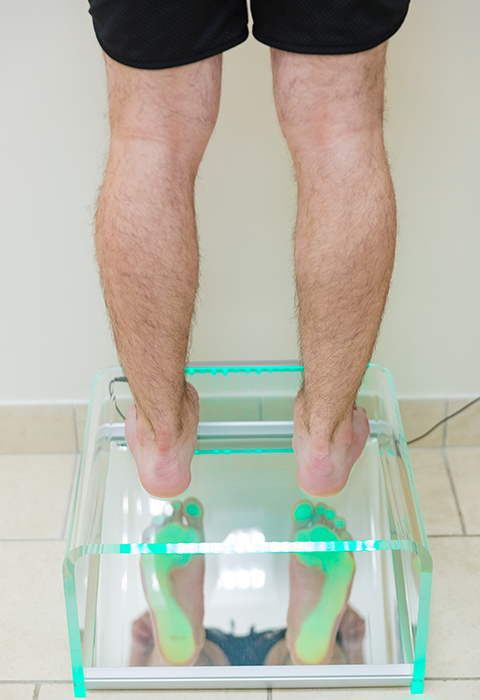
In the early stages, orthopedic diseases can be almost symptomless. The first symptoms can be pain in the hands, elbows, shoulders, hips, knees or ankles. Common symptoms of joint diseases:
- Pain in the lumbar spine.
- swelling of the joints.
- Pain in the joints when the weather changes.
- Deformation of the limbs or spine.
- Crunch when moving - twisting, bending, bending and straightening the limbs.
It should be borne in mind that even seemingly harmless diseases can progress over time and cause serious problems and significantly reduce the quality of life. The following is a list of the most common musculoskeletal disorders successfully treated by today's orthopedic surgeons:
- osteoarthritis.
- Arthrosis.
- dysplasia.
- tunnel syndrome.
- flat feet.
- Ligament and tendon injuries.
- Lower limb injuries.
Why you need rehabilitation after qualified medical intervention
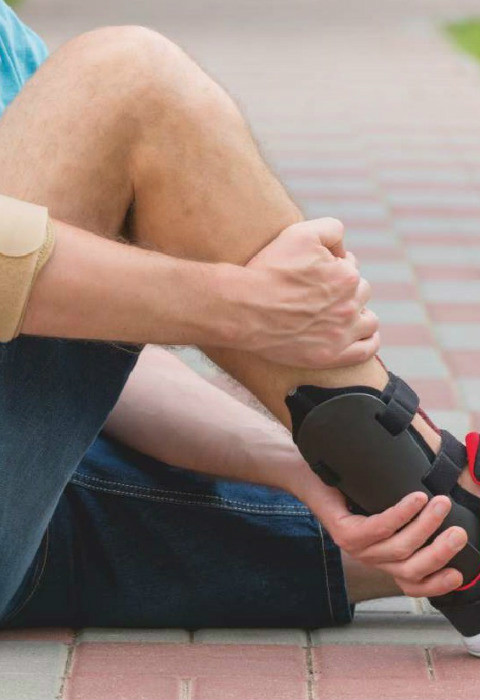
Many medical centers and hospitals offer qualified assistance in the surgical treatment of diseases of the musculoskeletal system, but a distinctive feature of orthopedics in Moscow is the almost complete absence of professional rehabilitation centers. However, in order for the treatment to be effective and for the patient to regain full mobility as soon as possible, an individual approach to the rehabilitation period, carefully selected pharmacological support, physical therapy and dosed rehabilitation exercises are required.
Operative trauma orthopedics
Modern medicine has made great strides in treating various injuries and diseases of the musculoskeletal system. New scientific advances and the use of new methods make it possible to carry out surgical treatment of diseases of the musculoskeletal system at a new level of quality.
Thanks to new minimally invasive surgical techniques, the possibility of visual monitoring and the use of the most modern prosthetic materials and alloys, surgical interventions have become much easier and, more importantly, their results are much more successful.
The 'SM Clinic' is one of the few private medical clinics that offers its patients surgical treatment of injuries and diseases of the musculoskeletal system.
Article
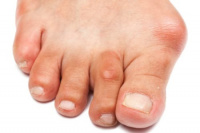
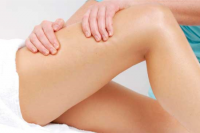
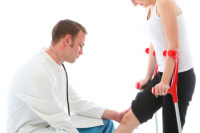
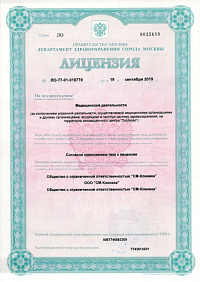
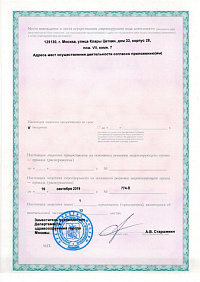
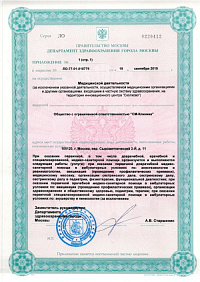
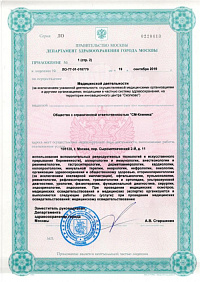
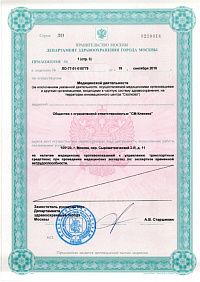
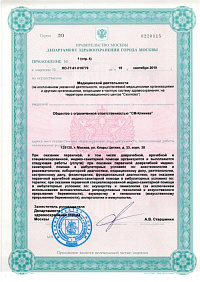
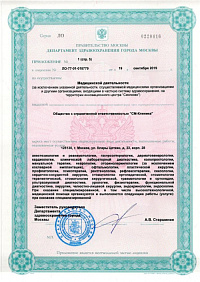
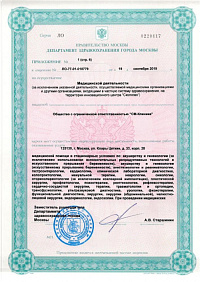
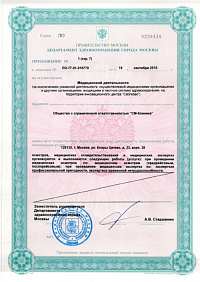
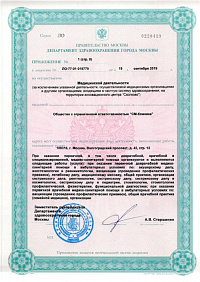
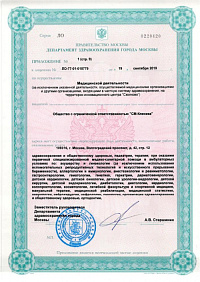
Who is an Orthopedic Traumatologist?
An orthopedic traumatologist is a doctor who deals with the diagnosis and treatment of diseases and injuries of the musculoskeletal system. Patients come to him with joint anomalies and injuries to hard and soft tissue structures.
Fresh injuries are the easiest to treat, so don't hesitate to see an in-office trauma surgeon. If you don't see a doctor right away after the injury, you may develop symptoms over time due to abnormal bone fusion or extensive ligament and muscle scarring.
An orthopedic trauma surgeon is most often consulted for joint and spinal problems. This doctor deals with diseases of the musculoskeletal system and treats patients after injuries.
When should you make an appointment with an orthopedist/traumatologist?
You should see a podiatrist if you have pain in your joints, neck, limbs or back and are finding it difficult to move. It is worth seeing a specialist if you suffer from the following ailments: increased fatigue when walking, discomfort when climbing stairs. Such subtle symptoms can indicate the development of a serious condition.
Consultation of an orthopaedist/traumatologist is required in the case of:
- abnormalities of the spine;
- congenital anomalies of the muscular, skeletal and joint systems; – congenital disorders of the muscular, skeletal and joint systems;
- diseases of the joints;
- weak defects of the muscular corset and ligamentous apparatus, leading to anatomical defects;
- skeletal abnormalities;
- Injuries to the musculoskeletal system.
An urgent visit to the doctor is necessary if you have an ugly wound, a fall or a cut. Do not delay your visit to the doctor if you are in pain after an accident or traffic accident, your general condition deteriorates, the injured area swells, your joints crunch or their function is impaired.
Your doctor may refer you to another doctor during your visit. The fact is that heredity, metabolic disorders, autoimmune diseases and endocrine disorders affect the formation of the musculoskeletal system. Therefore, the work of the orthopaedist/traumatologist is linked to that of other specialists such as rheumatologists, endocrinologists and immunologists.
Arranging an appointment for a fee-based visit to the doctor
You can make an appointment with an orthopedic traumatologist at the Khamovniki rehabilitation clinic in Moscow. Our specialists have many years of experience. They have additional specializations and undergo regular further training.
The consultation and examination will take place on a day convenient for the patient. If necessary, the specialist will refer you for further diagnosis. This is necessary to make an accurate diagnosis. All examinations can be carried out in our clinic with the most modern equipment, without having to stand in line.
The orthopedist and accident surgeon works together with other specialists. This allows the pathology to be recognized more quickly and the correct treatment to be prescribed. Therapy is comprehensive and aimed at improving the patient's condition as much as possible.
When should I bring a specialist in orthopedics and trauma surgery to my home?
An orthopedist specializes in the prevention, diagnosis and treatment of conditions such as dislocations, inflammation of joints and bones, deformities of limbs, spurs, flat feet, scoliosis, contusions, injuries, fractures of limbs and other parts of the body.
Indications for seeing a specialist are chronic joint pain, muscle weakness, stiffness in movement and injuries. Ignoring even minor discomfort with movement can lead to complications and dangerous consequences.
Musculoskeletal disorders can be treated conservatively or surgically. In the early stages of the disease, the conservative method gives good results, so you should not delay the visit to the doctor.
To contact a doctor, call the number on the website or fill out an online application.
What is the survey like at home?
- Collection of an anamnesis by questioning the patient about complaints, time and circumstances of the symptoms, previous illnesses, heredity;
- examination of the patient;
- Palpation of the painful areas, examination of X-rays of the musculoskeletal system
- making a diagnosis;
- Treatment and recommendations for the prevention of complications.
If necessary, the doctor will recommend additional diagnostic measures, e.g. B. X-rays that can be performed in our clinics.
Once a reliable diagnosis has been made, the doctor will suggest a treatment plan.
The home visit of the orthopedic trauma surgeon
This branch of medicine is closely related to problems of the musculoskeletal system, which is why it is often difficult for patients who need professional help to see a doctor in an outpatient clinic. A home visit with an orthopedic trauma surgeon enables the patient to visit a surgeon in their own four walls. This service is also used by people who, for one reason or another, are trying to limit contact with other people or are pressed for time.
A home visit to an orthopedist includes consultation, examination and medical history, diagnosis and, if necessary, the creation of a treatment plan. The patient receives a doctor's certificate and, in the case of temporary incapacity to work, a sick note can also be issued at home.
SM Clinic conducts home visits 24 hours a day, seven days a week. The doctor will come the same day if the call is made before 7 p.m.
The outpatient services of the doctors of the SM Clinic are provided within Moscow and the surrounding area. The coverage area outside the Moscow Ring can be determined by telephone.
The number where you can reach an orthopedic traumatologist at home is +7 (495) 292-39-72.
What diseases does the orthopedic traumatologist treat?
An orthopedic traumatologist deals with the prevention and treatment of
- scoliosis
- kyphosis;
- lordosis;
- clubfoot;
- underdevelopment of the limbs;
- flat feet;
- congenital or acquired torticollis;
- joint abnormalities;
- intervertebral fractures;
- hip dysplasia;
- valgus deformity;
- Osteoporosis;
- Gout;
- Dupuytren's contracture;
- synovial cysts (hygromas);
- carpal tunnel syndrome;
- bursitis (synovialis);
- heel spur;
- tarsal tunnel syndrome;
- Injuries: bruise, fracture, dislocation, sprain, rupture of ligaments, muscles, tendons;
- traumatic disorders;
- Benign tumors and tumor-like diseases of the musculoskeletal system.
As well as all other injuries, congenital and acquired diseases and deformities of bones, joints, muscles, ligaments and tendons.
The orthopedic-traumatologist provides aftercare after injuries and surgeries, and also deals with the prevention and prevention of injuries and diseases. He makes recommendations and prescribes the necessary treatments.
When should you see an orthopedic trauma surgeon?
Make an appointment to see a specialist as soon as the following symptoms appear
- crunching in any joint when moving;
- Pain in bones, joints or spine when moving or at rest
- movement restriction
- numbness in your arms, legs or back;
- muscle pain with no apparent cause;
- redness, swelling and enlargement of a joint;
- instability of the joint.
Urgently see an orthopedic traumatologist if:
- you have suffered any injuries, frostbite or burns;
- you have severe pain when you lean on your arm or leg;
- you suspect a fracture or dislocation;
- you have symptoms of a sprain or torn ligament;
- you cannot move or move your limbs;
- You were bitten by a tick or a dog.
It is also advisable to see a specialist for prevention, because many diseases remain undetected for a long time and are only discovered during examinations.
areas of expertise
The clinic covers all areas of modern orthopedics and traumatology. Both emergency and emergency operations for acute injuries and extensive tissue damage as well as elective surgical interventions for diseases of the musculoskeletal system of any degree are carried out. For older patients, special geriatric programs have been developed to speed up the recovery process.
The medical center offers a wide range of conservative treatment options. Doctors have a range of modern physiotherapies, naturopathic treatments, reflexology and other non-pharmacological methods at their disposal.
The clinic's specialists successfully design rehabilitation programs after operations, injuries or diseases of the musculoskeletal system. A holistic approach and the use of the latest technology enable our doctors to provide the best possible care.
Services
All modern treatment methods for injuries, degenerative-dystrophic and inflammatory diseases of the musculoskeletal system are available in the Department of Traumatology and Orthopedics:
The hospital performs open and arthroscopic surgeries, applies microsurgical techniques, and makes extensive use of conservative, non-medical treatments. The most effective and safe treatment plan is developed for each patient.
- Therapeutic treatment of diseases of the musculoskeletal system (prescribing drugs, physical therapy, physiotherapy and other methods);
- Emergency, elective and urgent surgeries for serious injuries using 3D printing, computer navigation and other modern objective methods;
- arthroscopic treatment of joint pathologies by cold plasma ablation;
- joint endoprosthetics with foreign implants;
- surgical correction of the bone of the big toe (hallux valgus);
- Treatment of fractures using minimally invasive techniques;
- Osteosynthesis and bone reconstruction (also in hip joint and pelvic diseases);
- Treatment of tendon and nerve pathologies using microsurgical techniques;
- shock wave therapy in degenerative and dystrophic diseases;
- Closure of joints that cannot be treated or repaired with arthrodesis.
The clinic uses all available treatment methods:
- Surgery;
- exercise therapy;
- Massage;
- Physical therapy;
- Manual therapy;
- medical treatment;
- blockages;
- naturopathy, etc.
Patients are offered paid medical care, which provides access to a wide range of examinations and therapeutic technologies, the possibility of choosing a room with higher comfort and additional services.
patient ratings
To Jahangir Agzamov!!! Thank you Doctor, so much! For giving me strength, for helping me when my illness was crushing me. I will thank you for your work, for your knowledge, for your talent, you are a doctor from God, it is clear to everyone, you are a diamond! And in medicine you are the best doctor in the world, May God give you strength, And keep you from misfortune! I'll never say goodbye to you, a surgeon in my heart.
He was in the clinic in 2015-2016. The operation and subsequent treatment were of the highest standard. A big thank you to all the staff.
I had two hip surgeries this year. I cannot thank the entire staff in the trauma and orthopedics department enough. Under the leadership of the excellent doctor and wonderful person Azgamov Yahangir Salimovich there are true professionals, people with extraordinary human qualities. There are no indifferent people in this department. A huge THANK YOU to Father Kentenich's surgeons.
Many thanks to my doctor Artem Nikolaevich Tkalin for the brilliantly performed complicated knee surgery, attentive, easy attitude, positive attitude that inspires confidence! It has now been 3 months since the operation. I walk with no restrictions, no support, no pain or painkillers, on a straight, healthy leg. That's a whole different quality of life! I would also like to thank the caring, professional staff.
I would like to thank Rustam Fattuloevich Karimov and the staff of the Department of Traumatology and Orthopedics for the excellent knee surgery I underwent. After the operation I was able to leave the hospital on my own two feet and with a cane. Thank you very much.
services and prices
Administration of medication in the operating room under C-arm control (no costs for medication)
Intra-articular injection of drugs. Hyaluronic Acid Injection (Ostenil)
Intra-articular drug injection. Hyaluronic Acid Injection (Hyruan)
Intra-articular injection of hyaluronic acid preparations into large joints under ultrasound guidance (without consumables costs).
Intra-articular injection of hyaluronic acid preparations into large joints (at no cost for consumables)
Intra-articular injection of hyaluronic acid into small joints (at no cost for consumables)
Intra-articular injection of hyaluronic acid into small joints under ultrasound guidance (at no cost for consumables)
Bone marrow harvesting for reconstructive operations in orthopedics and traumatology
Consultation with a sports medicine doctor, creation of an individual rehabilitation program, monitoring of the patient (10 days)
Treatment with Viodex complex for the knee (late postoperative phase)
Treatment with Viodex complex for the knee (early postoperative phase)
Viodex complex treatment of the shoulder (late postoperative phase)
Viodex complex treatment of the shoulder joint (early postoperative phase)
Therapeutic exercises on the device (1 session on the PowerPlate device with a trainer, 40 minutes)
Therapeutic exercises on the machine (1 session on the PowerPlate machine, 7 minutes, with instructor)
Local injection of the patient's own fat tissue with platelet-rich plasma (without consumables)
indications
In the case of bruises, fractures, torn ligaments, muscle and tendon injuries, a consultation with a trauma surgeon is necessary. Traumatologists treat patients of all ages, including children. Consultation with an orthopedist is necessary in the case of congenital disorders of the musculoskeletal system, changes in foot shape, gait or posture disorders, pain in the spine, joints, muscles or bones. Since congenital and acquired non-traumatic diseases in children do not follow the same course as in adults, pediatric orthopedics is a separate discipline within the large department of traumatology and orthopedics. A pediatric orthopaedist should be consulted when examining and treating children and adolescents.
Both traumatologists and orthopedists treat injuries to the musculoskeletal system. The decision as to who a patient is treated by depends on a number of circumstances: age of the injury, type of lesions, etc. If the patient has never been treated for the consequences of the injury and does not know which doctor to go to, an appointment with a trauma surgeon should be made.
conducting a consultation
Trauma surgeons and orthopaedists treat similar clinical pictures, so consultation with these specialists follows a similar pattern. The doctor listens to the patient's complaints and inquires about the circumstances, duration, and specifics of the illness or injury. He finds out what illnesses and injuries the patient has suffered in the past. He conducts an external examination and provides assistance. Initiates additional examinations (X-ray, MRI, CT, ultrasound). He issues referrals for inpatient treatment, physical therapy, physical therapy, massage, and orthotics.
You must bring all medical documentation relevant to your illness or injury (X-rays, CT and MRI results, excerpts from your medical history) to the consultation. Complete information about the disease or injury will facilitate diagnosis and allow you to choose the most effective treatment tactics.
Read more:- Free online consultation with an orthopedic trauma surgeon.
- Consultation of an orthopedic traumatologist.
- Free online consultation with an orthopedic surgeon.
- Consultation of an orthopedic surgeon.
- Visit to an orthopedic surgeon.
- Rating of orthopedic surgeons.
- Forum of orthopedists and trauma surgeons.
- orthopedist, the.
